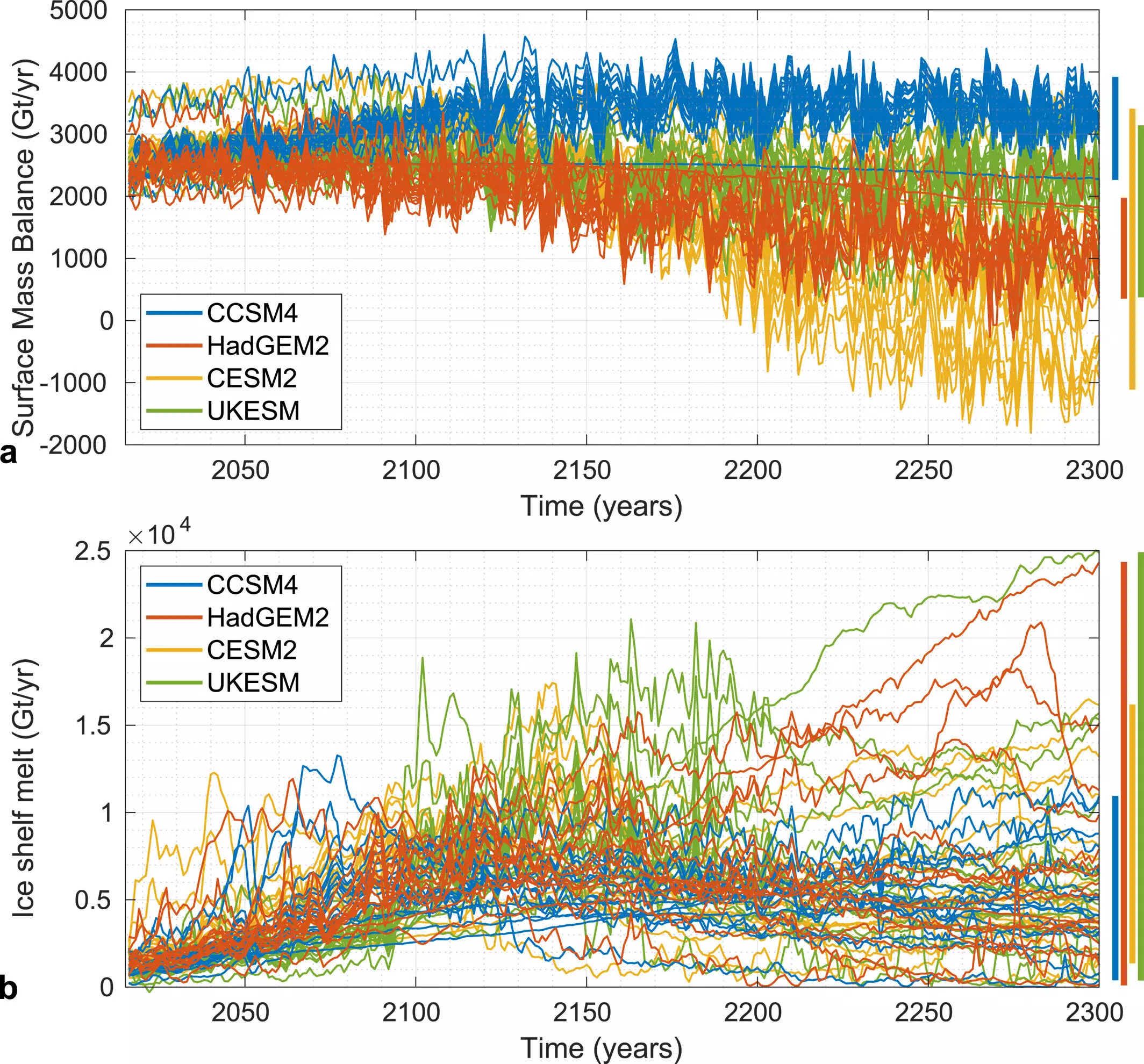In an era defined by climate change discourse, a groundbreaking study led by a team from Dartmouth College has illuminated the undiscovered trajectories of Antarctica’s ice sheet due to carbon emissions. Over 50 climate scientists from around the globe collaborated to provide an analysis that extends beyond traditional models, focusing on projections that reach into the next three centuries. The research highlights a stark and alarming trend: while moderate projections could be feasible through the 21st century under current emissions, the scenario becomes much grimmer beyond 2100, casting a long shadow over future policy-making and environmental stewardship.
Researchers synthesized data from 16 ice-sheet models, which collectively indicate a gradual increase in ice loss throughout the current century. However, the consensus breaks down drastically beyond 2100, where projections begin to diverge significantly. It is predicted that under current carbon emissions trajectories, the Antarctic ice sheet’s western basins will experience rapid retreat, marking an acceleration in melting glaciers that could contribute to a staggering rise in global sea levels—potentially by as much as 5.5 feet by the year 2200. Such information is not trivial; it forces policymakers to consider long-term consequences that are often overshadowed by short-term predictions and immediate concerns.
Dr. Hélène Seroussi, the leading author and an associate professor at Dartmouth’s Thayer School of Engineering, emphasizes an essential truth: discussions around sea-level rise predominantly fixate on the impacts by 2100. This myopia could hinder effective decision-making, as the real drama unfolds in the centuries beyond our current focus. The study makes it clear that the long-term consequences of current carbon emissions are profound, potentially amplifying risks for regions vulnerable to sea-level rise, thus necessitating urgent carbon reduction initiatives. The overarching message is irrefutable: efforts must be reinforced immediately to stave off catastrophic outcomes.
The research analyzed both high and low-emission scenarios to understand potential futures under differing levels of carbon output. Interestingly, while current emissions may seem manageable on a short-term scale, the anticipated impact on sea-level rise widens dramatically after the pivotal year of 2100. This finding corresponds with the assertion that lackluster emissions reductions today will undeniably lead to a harsher reality for future generations—a stark reminder of the ongoing urgency to transition to sustainable practices and regulatory frameworks.
As policymakers grapple with the daunting task of addressing climate change, these findings should serve as a clarion call to broaden their timelines. Traditional climate models often limit discussions to the first three decades of the 21st century; however, the reality is that climate issues are multi-generational. Policymaking must evolve to consider impacts that extend well into the future. The possibility of a near-total collapse of Antarctica’s ice sheet by 2300, a terrifying scenario brought to light by the study, underscores the importance of immediate action rather than reactive measures.
The ramifications of this research are not isolated; they invite a call for collaborative efforts within the scientific community. By pooling resources and insights, researchers can resolve remaining uncertainties surrounding projections for both the Antarctic and Greenland ice sheets. Dr. Seroussi’s remarks highlight the potential for future studies that refine our understanding and substantiate the critical importance of early intervention in carbon emissions reduction strategies. If humanity is to avoid the perilous trajectory laid out by this research, a collective commitment to sustainability and aggressive policy change must be prioritized, fostering a resilience that will serve generations to come. The resilience of Antarctica’s icy expanse hangs in the balance, and it is up to today’s leaders to ensure that balance is not shattered.


Leave a Reply